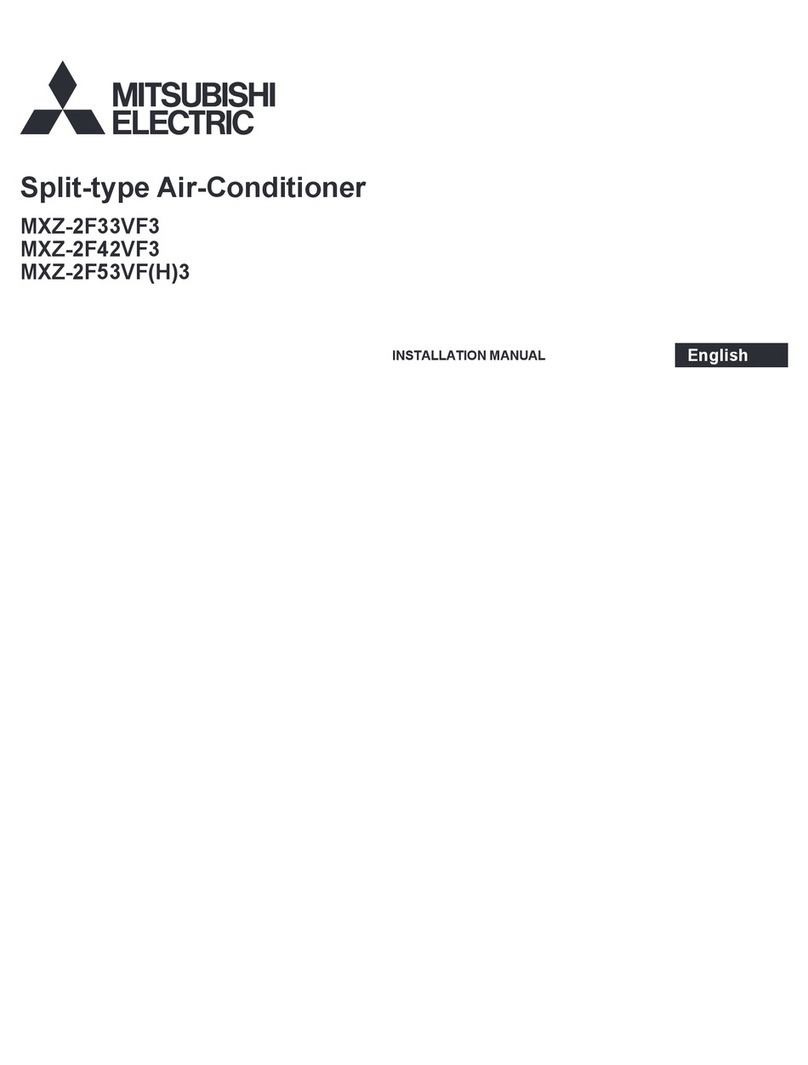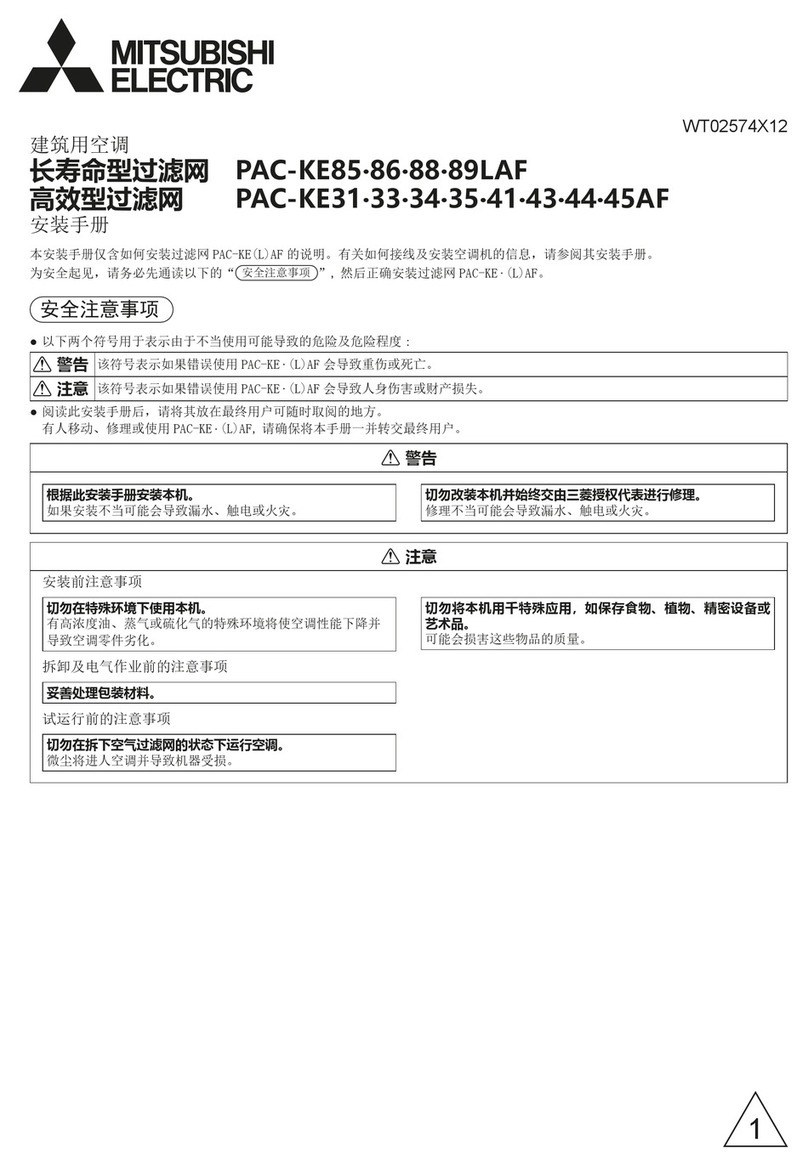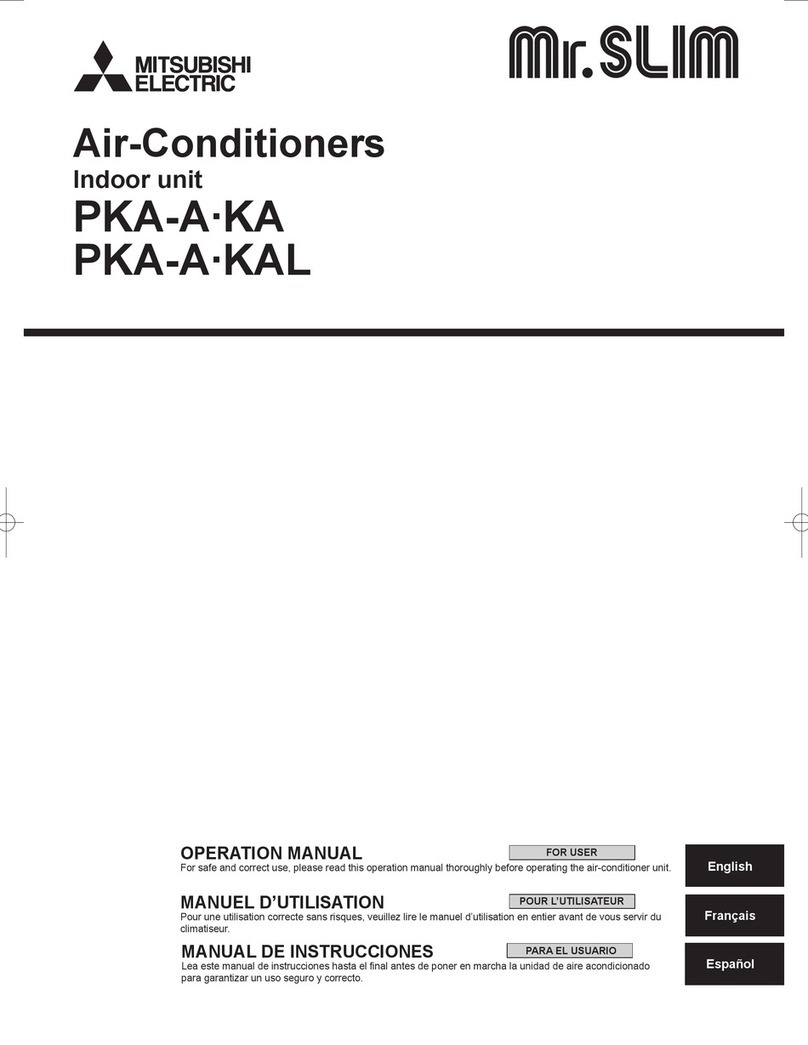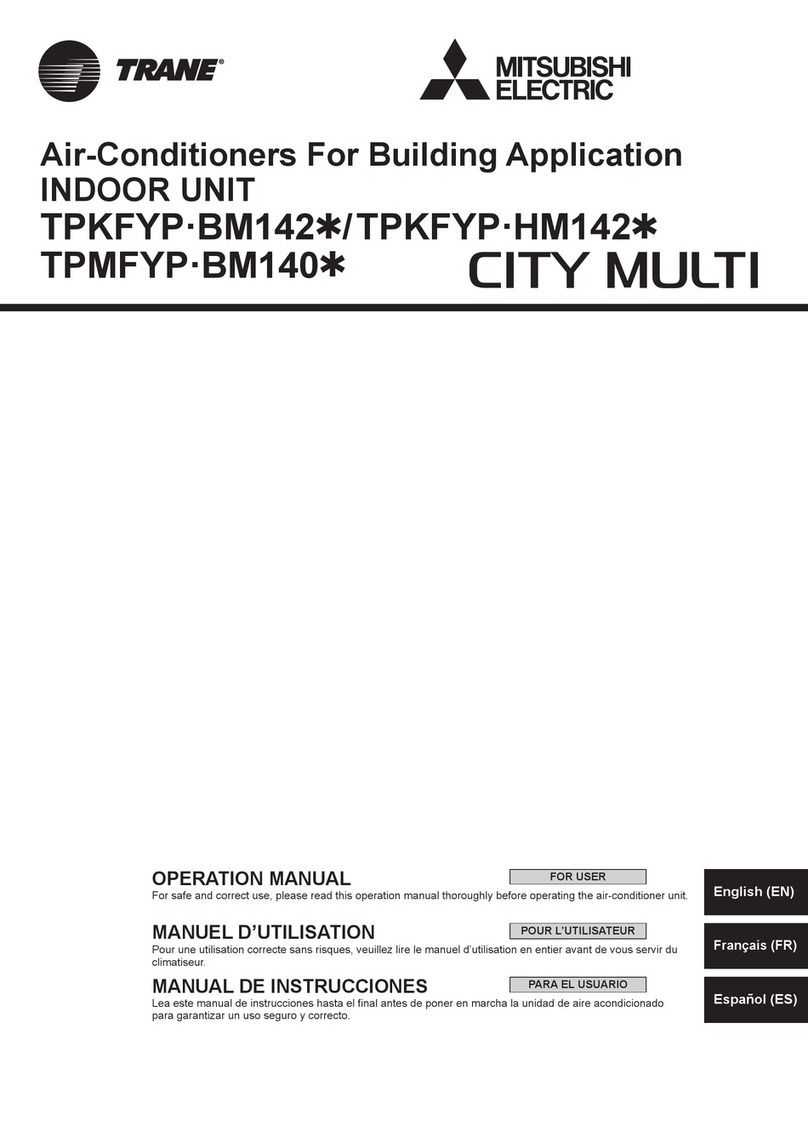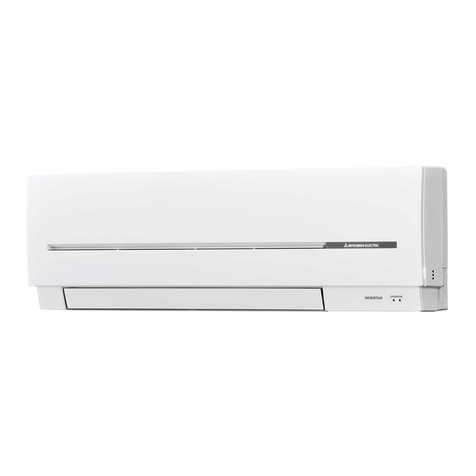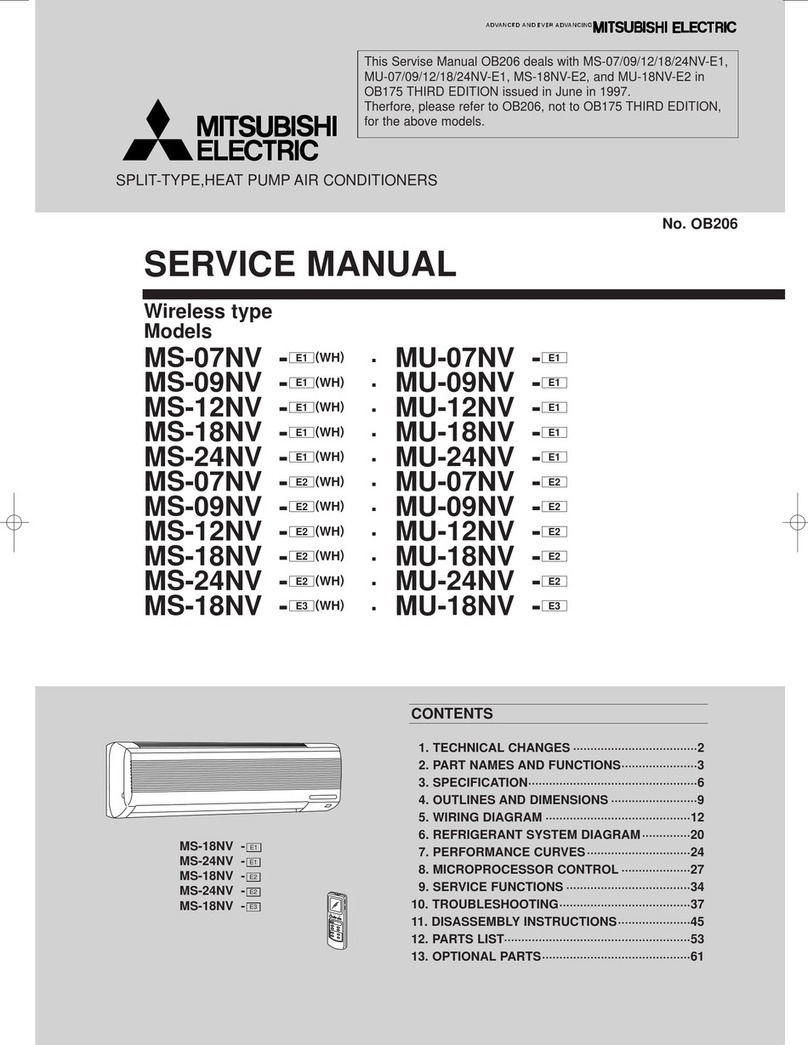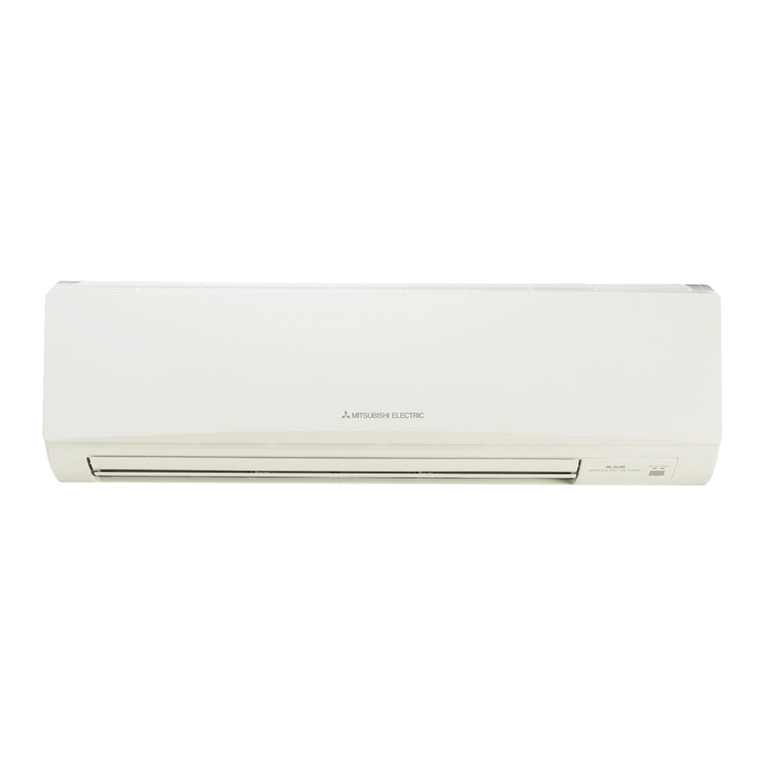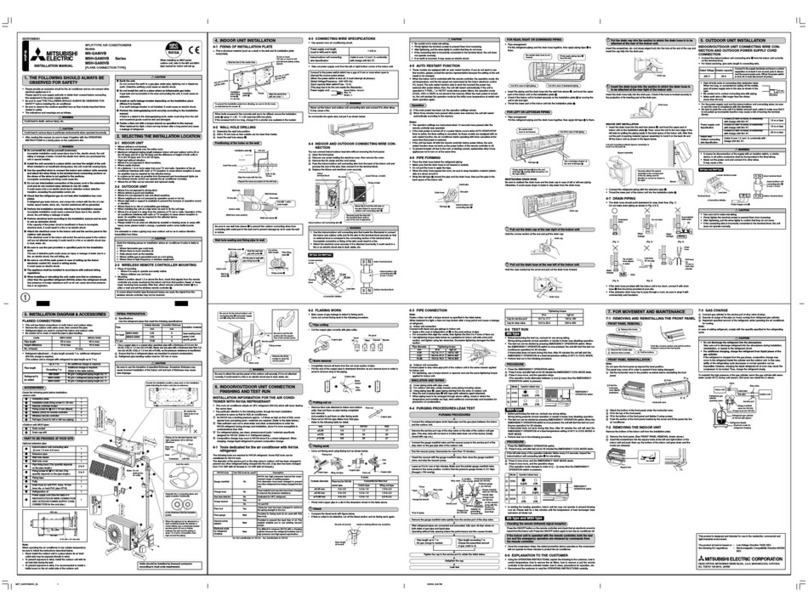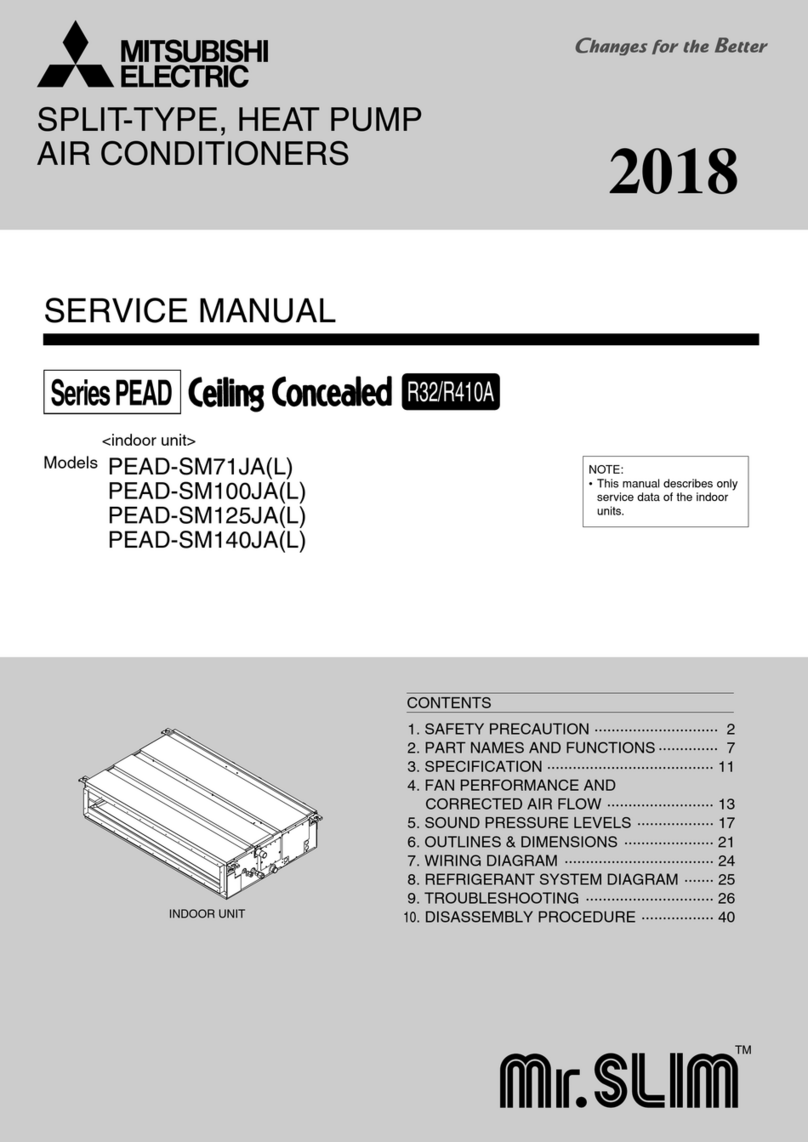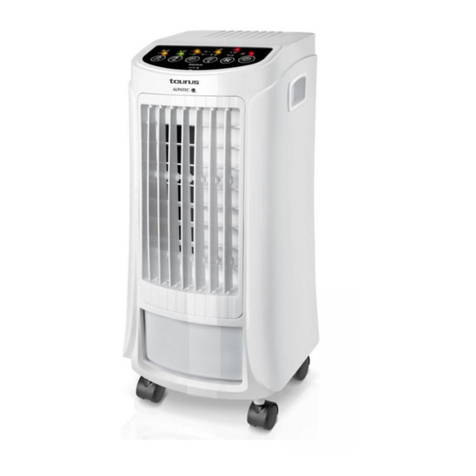
6
GB
Contents
1.1. Before installation and electric work
uBefore installing the unit, make sure you read all the “Safety
precautions”.
uThe “Safety precautions” provide very important points
regarding safety. Make sure you follow them.
Symbols used in the text
Warning:
Describes precautions that should be observed to prevent danger of injury
or death to the user.
Caution:
Describes precautions that should be observed to prevent damage to the
unit.
Symbols used in the illustrations
:Indicates an action that must be avoided.
:Indicates that important instructions must be followed.
:Indicates a part which must be grounded.
:Indicates that caution should be taken with rotating parts. (This symbol
is displayed on the main unit label.) <Color: Yellow>
:Beware of electric shock (This symbol is displayed on the main unit la-
bel.) <Color: Yellow>
Warning:
Carefully read the labels afxed to the main unit.
Warning:
• Ask the dealer or an authorized technician to install the air conditioner.
- Improper installation by the user may result in water leakage, electric
shock, or re.
• This appliance is not intended for use by persons (including children) with
reduced physical, sensory or mental capabilities, or lack of experience
and knowledge, unless they have been given supervision or instruction
concerning use of the appliance by a person responsible for their safety.
• Install the air unit at a place that can withstand its weight.
- Inadequate strength may cause the unit to fall down, resulting in injuries.
• Use the specied cables for wiring. Make the connections securely so
that the outside force of the cable is not applied to the terminals.
- Inadequate connection and fastening may generate heat and cause a re.
• Prepare for typhoons and other strong winds and earthquakes and in-
stall the unit at the specied place.
- Improper installation may cause the unit to topple and result in injury.
• Always use an air cleaner, humidier, electric heater, and other acces-
sories specied by Mitsubishi Electric.
- Ask an authorized technician to install the accessories. Improper installa-
tion by the user may result in water leakage, electric shock, or re.
• Never repair the unit. If the air conditioner must be repaired, consult the
dealer.
- If the unit is repaired improperly, water leakage, electric shock, or re may
result.
• If the supply cord is damaged, it must be replaced by the manufacturer,
its service agent or similarly qualied persons in order to avoid a hazard.
1. Safety precautions
• Do not touch the heat exchanger ns.
- Improper handling may result in injury.
• When handling this product, always wear protective equipment.
EG: Gloves, full arm protection namely boiler suit, and safety glasses.
- Improper handling may result in injury.
• Install the air conditioner according to this Installation Manual.
- If the unit is installed improperly, water leakage, electric shock, or re may
result.
• Have all electric work done by a licensed electrician according to “Elec-
tric Facility Engineering Standard” and “Interior Wire Regulations” and
the instructions given in this manual and always use a special circuit.
- If the power source capacity is inadequate or electric work is performed
improperly, electric shock and re may result.
• Keep the electric parts away from water (washing water etc.).
- It might result in electric shock, catching re or smoke.
• Securely install the outdoor unit terminal cover (panel).
- If the terminal cover (panel) is not installed properly, dust or water may en-
ter the outdoor unit and re or electric shock may result.
• When moving and reinstalling the air conditioner, consult the dealer or
an authorized technician.
- If the air conditioner is installed improperly, water leakage, electric shock,
or re may result.
• Do not reconstruct or change the settings of the protection devices.
- If the pressure switch, thermal switch, or other protection device is shorted
and operated forcibly, or parts other than those specified by Mitsubishi
Electric are used, re or explosion may result.
• To dispose of this product, consult your dealer.
• Do not use a leak detection additive.
• Children should be supervised to ensure that they do not play with the
appliance.
• The installer and system specialist shall secure safety against leakage
according to local regulation or standards.
- The instructions in this manual may be applicable if local regulation are not
available.
• Pay a special attention to the place, such as a basement, etc. where re-
frigeration gas can stay, since refrigeration is heavier than the air.
• This appliance is intended to be used by expert or trained users in
shops, in light industry and on farms, or for commercial use by lay per-
sons.
1.2. Before getting installed
Caution:
• Do not use the air conditioner where food, pets, plants, precision in-
struments, or artwork are kept.
- The quality of the food, etc. may deteriorate.
• Do not use the air conditioner in special environments.
- Oil, steam, sulfuric smoke, etc. can signicantly reduce the performance of
the air conditioner or damage its parts.
• When installing the unit in a hospital, communication station, or similar
place, provide sufcient protection against noise.
- The inverter equipment, private power generator, high-frequency medical
equipment, or radio communication equipment may cause the air condi-
tioner to operate erroneously, or fail to operate. On the other hand, the
air conditioner may affect such equipment by creating noise that disturbs
medical treatment or image broadcasting.
• Do not install the unit on a structure that may cause leakage.
- When the room humidity exceeds 80 % or when the drain pipe is clogged,
condensation may drip from the indoor unit. Perform collective drainage
work together with the outdoor unit, as required.
1. Safety precautions........................................................................................6
1.1. Before installation and electric work ............................................. 6
1.2. Before getting installed ................................................................. 6
1.3.
Before getting installed (moved) - electrical work.......................... 7
1.4. Before starting the test run ...........................................................7
2. Indoor unit accessories ................................................................................7
3. Selecting an installation site......................................................................... 7
3.1. Install the indoor unit on a ceiling strong enough to sustain its
weight ...........................................................................................7
3.2.
Securing installation and service space .............................................8
3.3. Combining indoor units with outdoor units.................................... 8
4. Fixing hanging bolts .....................................................................................8
4.1.
Fixing hanging bolts............................................................................8
5. Installing the unit ..........................................................................................8
5.1. Hanging the unit body................................................................... 8
5.2. Conrming the unit’s position and xing hanging bolts................. 8
6. Connecting drain pipe ..................................................................................8
6.1. Drain pipe specications...............................................................8
6.2. Drain pipe .....................................................................................8
6.3. Drain piping work..........................................................................8
6.4. Conrming drain discharge...........................................................9
7. Connecting water pipes................................................................................ 9
7.1. Important notes on water pipework installation ............................9
7.2. Water pipe insulation .................................................................... 9
7.3. Water treatment and quality control............................................ 10
8. Duct work ...................................................................................................10
9. Electrical wiring .......................................................................................... 11
9.1. Power supply wiring.................................................................... 11
9.2. Connecting remote controller, indoor and outdoor
transmission cables ....................................................................12
9.3. Connecting electrical connections .............................................. 12
9.4. External I/O specications .......................................................... 12
9.5. Selecting the external static pressure......................................... 12
9.6. Setting addresses.......................................................................13
9.7. Sensing room temperature with the built-in sensor in
a remote controller......................................................................13
9.8. Electrical characteristics .............................................................13



